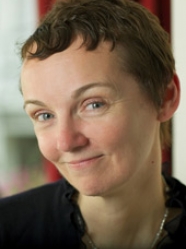What are the most solvable problems in diabetes?
By Kelly Close

twitter summary: What are the solvable problems in #diabetes ? We take a night in Vienna to discuss….
short summary: At EASD 2014 this year, we decided to take a night to focus on the bigger picture. While we heard compelling updates in science and technology, we wanted to discuss in more depth the most urgent needs in diabetes and what can be done (in some cases, continue to be done) about them.
We gathered recently in Vienna for the European Association for the Study of Diabetes (EASD) Conference to learn the latest in science and technology in the field. That included the official European launch of Abbott’s Freestyle Libre, its new glucose monitoring product, the FDA approval of Lilly’s once-weekly GLP-1 agonist Trulicity, and the European approval of Novo Nordisk’s sure-to-be- transformative combination basal insulin/GLP-1 analogue Xultophy. At diaTribe, we also wanted to take a broader look at the most urgent issues in diabetes and to muse on what steps experts think can be taken to address them. So we held what we ultimately perceived as a most valuable (and honestly, quite daunting) discussion with two esteemed panelists, Professor Philip Home, a Professor of Diabetes Medicine at Newcastle University in the UK, and Professor Jens Sandahl Christiansen, a clinical professor in the Department of Endocrinology and Diabetes at Aarhus University in Denmark.
Our focus was on solvable problems in diabetes, which is important to me both personally and professionally. And really – solvable?! That’s a big word – maybe addressable is a little easier way to look at this, given all the valuable work already being done. We all know there are huge challenges in diabetes care – a dangerous food environment that promotes unhealthy lifestyles, a health care system that doesn’t fully support the needs of chronic disease management, rising costs for supplies and therapies, and, well, you know. These challenges exist for both type 1 and type 2 and for pre-diabetes, but they are not insurmountable.
The discussion focused on several key issues, including the challenges of government regulation and reimbursement policy in the US and in Europe, how to best use the therapies we already have, and how Professor Home and Professor Christiansen would spend $10 billion in diabetes. Notably, Professor Home would spend the money on education on diet/exercise for the prevention of type 2 diabetes, while Professor Christiansen noted that A1c reductions for both type 1 and type 2 are eminently possible with investment in better therapies. Patient engagement was a key focus, as we discussed both hypoglycemia and weight gain as barriers to adherence and how to better use insulin so that it does not cause hypoglycemia. As Professor Home said, “Insulin does not cause hypoglycemia. It’s the way we give insulin that causes hypoglycemia. We need technology to give insulin only when it’s needed. That will revolutionize the field.”
To learn more about the event, you can visit our page at diaTribe.org/EASDProgram – and please write to us with what you think are some of the most solvable problems in diabetes today and what you think we can do to start addressing and/or continuing to address these issues. Don’t let resources hold you back – assume that we can get more global focus on this collection of problems.
When I started diaTribe in 2006, I thought, and still do think, that patient education is one of the most pressing needs and one that I wanted to help address with this publication and website. It’s heartening to know that as a patient community, we have been able to work on some of the big problems in the field – addressing the lack of insulin access in developing countries with campaigns like #SpareARose (which raised more than $26,000 this year), encouraging innovation in diabetes by working with the FDA to discuss patient perspectives on November 3, and increasing options for the unmet need in obesity medications with our recent testimony at the liraglutide Advisory Committee. We’ve always been delighted by the uplifting response from the community in taking action – from donating to a good cause, engaging with the FDA, or getting new options for patients – and look forward to seeing what many more meaningful steps we can accomplish together in the future.
very best,

Kelly L. Close
Never miss an update by signing up here to receive free updates on future diaTribe articles.







